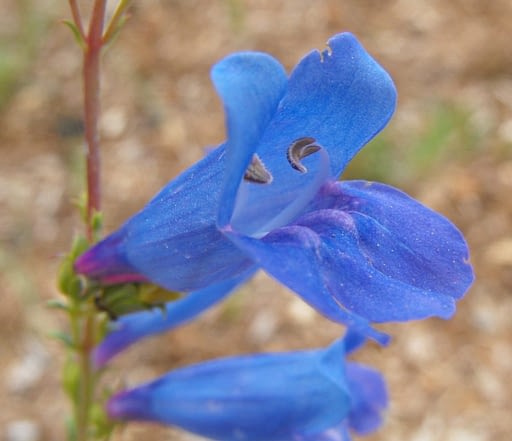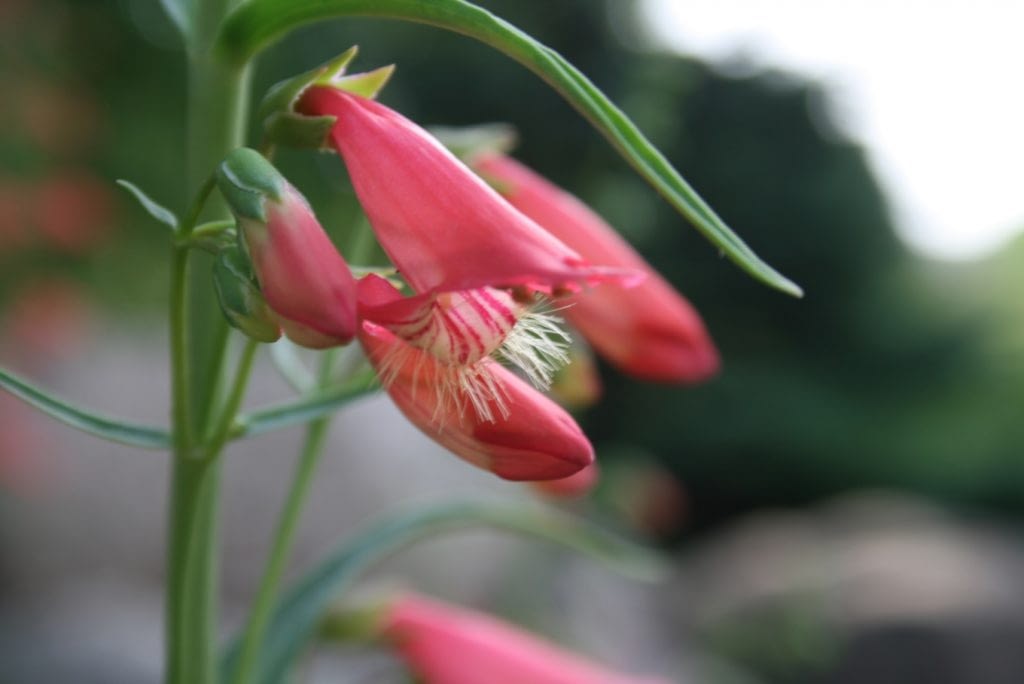
Penstemon Beardtongues. Do you know anything about the flowering Penstemon or Beardtongue? This plant is very valuable.
The valuable Penstemon genus contains more than 270 Beardtongue species ready to be grown in your garden and make a spark. The leaves are lance-shaped and bloom spikes of tubular flowers.
Flower colors include yellow, white, pink, red, white, and purple. The flower resembling a bearded iris that is why it has got its name, Beardtongue. Many botanists refer to the look of this beard when distinguishing among other Penstemon species.
Penstemon plant profile
1. Common name
The plant has the common name of Beardtongues.
2. Scientific name
The plant has the scientific name of Penstemon.
3. Origin
This Beardtongues plant can be found in North America such as Canada, the United States, and parts of Mexico.
4. USDA zones
This Beardtongues plant species is recommended for use in USDA hardiness zones 6 to 8 in areas receiving 8 to 10 inches and even more yearly precipitation.
5. Light requirement
The Beardtongues plant is happy to be in a location with full sun to shady areas. If you place the plant in direct sunlight, the plant will show their best foliage color like the reddish or purple varieties.
The Penstemon plant will attract hummingbirds, which do not frequent shady areas. The plant does like to be crowded.
For best results, you may want to space numerous Penstemon plants around 14 to 35 inches apart in one area. The spacing will be determined by their variety’s mature size.
6. Soil requirement
The best soil for Penstemon plants is in well-drained soil. These plants will also thrive well is a slightly alkaline soil and gravelly or sandy soil.
Once the soil poorly drains the water, the plant will die soon. During the winter moisture, the plant also extremely sensitive.
The best way to have the plant to survive in wet conditions is to place them on sloped or raised beds. The ideal condition is to retain the roots that have a steady supply of moisture and their crowns must remain dry.
You must retain these ideal conditions during the growing season. Do not place the plant using manure or peat moss.
7. Temperature
The Penstemon plant needs a moderately warm temperature between 65 degrees to 70 degrees Fahrenheit. You could lose some plants to root rot if the temperature of the areas is not warm enough.
8. Humidity
The origin of Penstemon plant in North America, the humidity should be similar to those areas. Many Penstemon varieties have trouble with the high humidity, but some may survive. The ideal humidity for Penstemon plants should be between 50% and 60% to thrive well.
9. Flower bloom period
You can expect flowers of Penstemon to bloom in the summer months through fall.
10. Size and width
The average height of the Penstemon plant is six to twelve inches. The width of the plant can reach between eight to twenty inches.
11. Usage
The Penstemon plant can be used as groundcover, for privacy, and good for erosion or slope control.
Penstemon care
1. Watering
The best time watering Penstemon plant is during the dry summer months, but do not overwater the plant. They do not need water during the winter months.
The amount of water to provide the plant will be determined by the water-holding capacity of the soil. The origin of species will also determine the amount of water needed.
However, you can water the Penstemon plant to a depth of two to four inches. For the next watering, let the soil to dry out.
2. Fertilizer
The best fertilizer for Penstemon plant is general-purpose fertilizer. Apply the fertilizer every four to six weeks during the growing season.
You can also apply and an annual application of natural or organic fertilizer in the fall months. Once the plant is the blooming period, add a high phosphorous formula to the plant.
3. Pruning the Penstemon plant
The Penstemons plants need little pruning. You can promote new foliage growth after the flowering is completed.
You can start by removing the stems for a second flush of blooms as well as new foliage growth.
4. Propagation
Beardtongues plants or Penstemon plants are grown from seeds. Wait until the weather is warm and do not sow the seeds in the winter.
If you decide to go in the winter, you can sow the seeds indoors. Prepare a planter or pot with well-drained and loose soil. Place the seeds at the top of the soil, and water them slowly until the water goes into the soil. Wait for seven to fourteen days until germination.
The other method of propagation is by rhizomes. On every three to five years, dig up and divide the plan. Dig up those rhizomes, and replant them in the soil.
5. Pests and diseases
If you plant the Penstemon plant in a poorly draining soil, this will cause root rot that may make the plant to die. Make sure to use well-drained soil.
Pests problems can occur, such as Southern blight, leaf spot, rust, and powdery mildew. Other that can cause issues are spider mites, snails and slugs.
Generally you can fix these pest problems using neem oil or insecticidal spray.
Varieties of Penstemon
Penstemon Barbatus

This variety of Penstemon will bloom in spring, 2 inches long of narrow spikes of two-lipped tubular flowers. The color of the flowers can be purple, carmine, red, or pink. The Penstemon Barbatus plant can reach three to six feet tall. This species will thrive well in USDA zones four to nine.
Penstemon hirsutus Pygmaeus

This Penstemon variety can thrive in USDA zones three to nine. The color of the flower is lavender with white lips nod above green leaves. The plant can reach a height of six inches tall.
Penstemon heterophyllus ‘Electric Blue’

This is a beautiful Penstemon plant with flowers that glow with color. The plant is drought-tolerant and can grow eighteen inches tall. Thrive well in USDA zones six to nine.
Penstemon digitalis ‘Husker Red’

This Penstemon blooms in the summer months (early to mid-summer) with loose spires of one inch tubular pink-flushed white flowers. The leaves are four to five inches long and deep maroon color. This plant can reach a height of two to three feet tall. The plant thrives well in USDA zones three to eight.
Frequently ask question
Do Penstemons bloom all summer?
Most of 270 species of Beardtongues bloom in early summer and late spring. If you prune the plant properly, the bloom season can be prolonged because the flowers fade fast.
How to take care of a Penstemon flower?
Why are the Penstemons not flowering?
There are a few reasons why a Beardtongue may not flower. One of the most common is lack of light, pruning not after flowering, and overfeeding. You need to repot the plant because the roots may be restricted that will stop the growth of flowers.
How often do you water Penstemons?
Careful watering is very important for Penstemon perennials. Water them well once a week to help new roots grow deeply. Soil should be wet at about one inch below the surface.
Why the Penstemon plant has yellow leaves?
Nematodes that attack Penstemon plants may cause the plant wilted and limp. You can see that the leaves are infected when the leaves have yellow patches that slowly turn brown or black. Lesions may cover the leaf entirely, causing leaf drop. You should consider planting Nematodes resistant varieties.